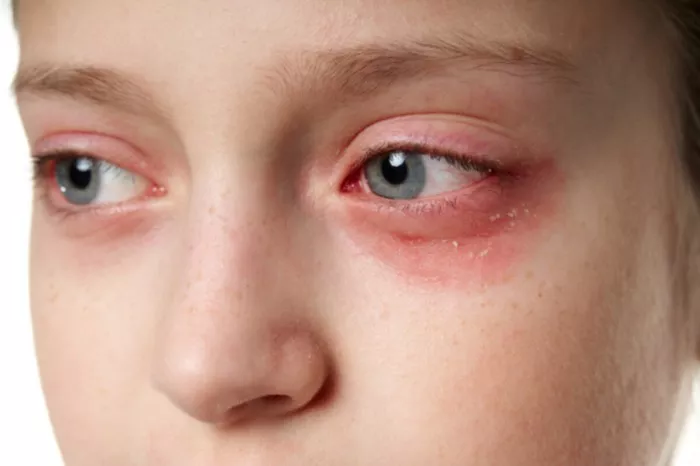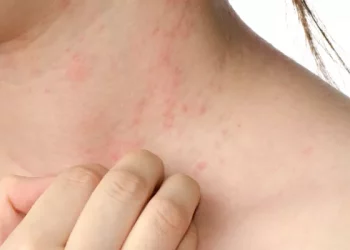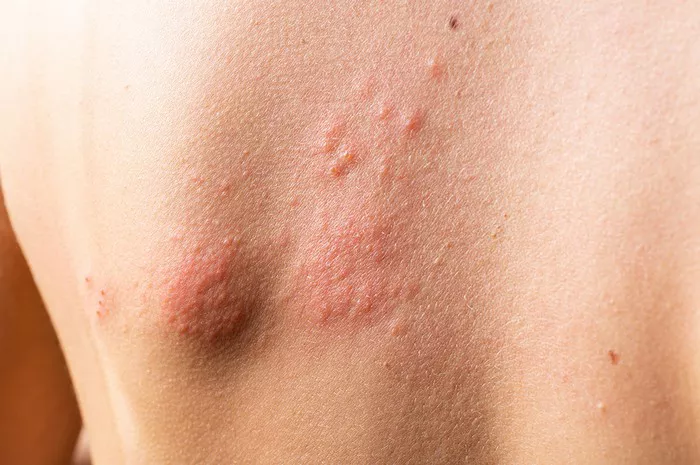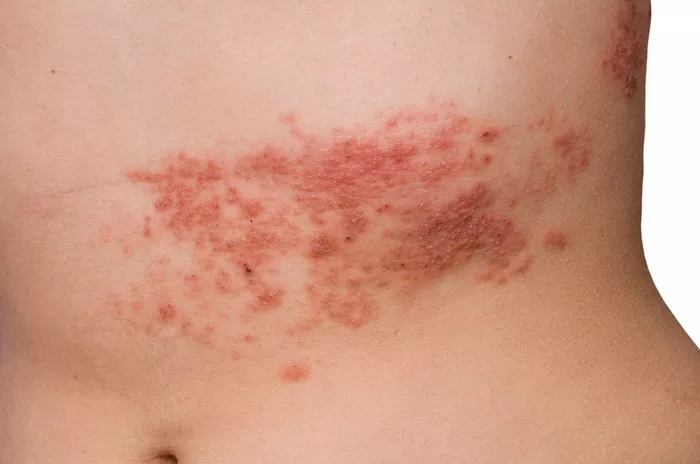Dermatitis is a common skin condition that causes inflammation, redness, and irritation. There are different types of dermatitis, including atopic dermatitis, contact dermatitis, seborrheic dermatitis, and others. While it may not always be possible to cure dermatitis completely, there are effective treatments and lifestyle changes that can help control the condition and reduce symptoms. In this article, we will explore the causes of dermatitis, treatment options, and prevention strategies to help you manage your skin health.
What Is Dermatitis?
Dermatitis refers to a group of skin conditions that cause inflammation. Symptoms often include red, itchy, and dry patches on the skin. The condition can affect anyone, though it is more common in children and individuals with a family history of allergies.
Types of Dermatitis
Atopic Dermatitis (Eczema): Atopic dermatitis, often referred to as eczema, is the most common form of dermatitis. It is often linked to allergic reactions and occurs when the skin’s natural barrier is weakened. This results in dry, itchy, and inflamed skin.
Contact Dermatitis: This type occurs when the skin comes into contact with an irritant or allergen, such as chemicals, fragrances, or certain metals. It may cause a rash, redness, and swelling.
Seborrheic Dermatitis: This condition causes flaky, greasy patches, often in areas with a lot of oil glands, such as the scalp, face, and chest. It is linked to an overgrowth of yeast on the skin.
Nummular Dermatitis: Nummular dermatitis causes round, coin-shaped lesions on the skin. It is typically triggered by dry skin or environmental factors.
Causes of Dermatitis
Understanding the causes of dermatitis is crucial in managing and treating the condition. The exact cause can vary depending on the type of dermatitis, but some common factors include:
Genetics: A family history of dermatitis or allergies can increase the risk of developing the condition.
Immune System Dysfunction: An overactive immune response can trigger inflammation in the skin.
Environmental Factors: Extreme temperatures, dry air, or exposure to irritants can worsen dermatitis symptoms.
Allergens and Irritants: Certain foods, chemicals, and fabrics can trigger allergic reactions or skin irritation.
Infections: Bacterial or fungal infections can cause or worsen dermatitis.
Symptoms of Dermatitis
Common symptoms of dermatitis include:
- Redness and inflammation
- Itching and discomfort
- Dry, flaky skin
- Blisters or oozing lesions (in some cases)
- Thickened skin (from chronic scratching)
The severity of symptoms can vary, ranging from mild irritation to severe outbreaks that can interfere with daily life.
How to Cure or Manage Dermatitis: Effective Treatment Options
While it may not be possible to cure dermatitis entirely, the following treatments can help manage symptoms, reduce flare-ups, and improve skin health.
1. Moisturize Regularly
Keeping your skin moisturized is one of the most important steps in treating dermatitis. Dry skin can make symptoms worse, so it’s essential to use a thick, fragrance-free moisturizer to lock in moisture.
Best Moisturizers for Dermatitis: Look for products that contain ingredients like ceramides, hyaluronic acid, or colloidal oatmeal. These help restore the skin’s natural barrier and soothe irritation.
How to Moisturize: Apply a thick layer of moisturizer immediately after bathing while the skin is still damp to help retain moisture. Do this several times a day, especially after washing your hands or face.
2. Use Gentle, Non-Irritating Cleansers
Avoid harsh soaps and cleansers that can strip your skin of natural oils. Opt for mild, fragrance-free products designed for sensitive skin.
Best Cleansers for Dermatitis: Use a gentle, soap-free cleanser with a neutral pH. Look for products labeled “non-comedogenic” (won’t clog pores) and “hypoallergenic.”
3. Apply Topical Steroid Creams
Topical corticosteroids are one of the most common treatments for dermatitis. These creams help reduce inflammation and itching. However, they should only be used under the guidance of a healthcare provider because prolonged use can thin the skin.
How to Use: Apply a thin layer of the cream to the affected areas once or twice daily, as directed by your doctor. Avoid using it on broken or infected skin.
Potency of Steroids: Your doctor may recommend different strengths of corticosteroids depending on the severity of your symptoms. Mild steroids may be used for the face and sensitive areas, while stronger steroids may be needed for more stubborn patches.
4. Consider Topical Calcineurin Inhibitors
For those who cannot use steroids long-term or those with sensitive skin, topical calcineurin inhibitors (TCIs) may be an alternative. These non-steroidal medications help reduce inflammation without thinning the skin.
Examples: Tacrolimus (Protopic) and pimecrolimus (Elidel) are TCIs that are often used to treat atopic dermatitis. These may be used on sensitive areas like the face or eyelids.
5. Antihistamines for Itching
Itching is one of the most bothersome symptoms of dermatitis. Over-the-counter antihistamines can help relieve itching, especially at night when it might be harder to resist scratching.
Best Antihistamines for Dermatitis: Non-sedating antihistamines like loratadine (Claritin) or cetirizine (Zyrtec) can be helpful without causing drowsiness. In more severe cases, your doctor may recommend stronger medications.
6. Phototherapy (Light Therapy)
In cases of severe dermatitis that don’t respond to topical treatments, phototherapy (light therapy) may be recommended. This treatment uses ultraviolet (UV) light to reduce inflammation and control flare-ups.
How It Works: Phototherapy involves exposing the skin to controlled amounts of UVB light in a clinical setting. It’s typically done several times a week until symptoms improve.
7. Oral Medications for Severe Cases
In some cases, oral medications may be prescribed to control severe dermatitis, especially when other treatments are ineffective.
Oral Corticosteroids: Short-term use of oral steroids may be prescribed for flare-ups, but they are generally not recommended for long-term use due to side effects.
Immunosuppressive Drugs: Drugs like methotrexate or cyclosporine may be used to suppress the immune system and reduce inflammation in severe cases.
8. Natural Remedies for Dermatitis
Some people may find relief from dermatitis symptoms using natural remedies, although it’s important to consult a healthcare provider before trying these options.
Aloe Vera: Aloe vera gel can help soothe irritated skin and promote healing. Apply fresh aloe vera gel directly to the affected areas.
Coconut Oil: Coconut oil has anti-inflammatory and moisturizing properties that may help improve skin health. Apply it to dry, flaky skin for relief.
Oatmeal Baths: Colloidal oatmeal is known for its soothing effects on irritated skin. Adding oatmeal to a lukewarm bath can help relieve itching and inflammation.
9. Lifestyle Changes to Manage Dermatitis
While medications and treatments can help, lifestyle changes also play a significant role in managing dermatitis over the long term.
Avoid Triggers: Identifying and avoiding triggers that cause flare-ups is essential. Common triggers include harsh soaps, fragrances, certain fabrics (like wool), temperature changes, stress, and allergens.
Wear Soft, Breathable Fabrics: Choose clothing made from soft fabrics like cotton, which are less likely to irritate the skin. Avoid tight clothing that may rub against affected areas.
Stress Management: Stress can worsen dermatitis, so finding ways to manage stress through relaxation techniques like yoga, meditation, or deep breathing exercises can be beneficial.
Preventing Dermatitis Flare-Ups
Prevention is key to managing dermatitis and reducing flare-ups. Follow these tips to keep your skin healthy:
Keep Skin Moisturized: Moisturizing is the most effective way to prevent dryness, which can lead to flare-ups. Make moisturizing part of your daily routine.
Avoid Scratching: Scratching can worsen inflammation and lead to infections. Keep your nails trimmed and consider wearing cotton gloves at night if you tend to scratch in your sleep.
Monitor Your Diet: Some people find that certain foods trigger their dermatitis symptoms. Consider keeping a food diary to identify potential triggers. Common triggers include dairy, nuts, or gluten.
When to See a Doctor
If your dermatitis does not improve with over-the-counter treatments or if symptoms worsen, it’s important to see a doctor. A healthcare provider can help determine the underlying cause and recommend the best course of treatment.
In some cases, dermatologists may perform patch testing to identify allergens or prescribe stronger medications.
Conclusion
While there is no definitive cure for dermatitis, there are many effective treatments and lifestyle changes that can help you manage symptoms and improve your quality of life. By following a regular skincare routine, avoiding triggers, and working closely with your healthcare provider, you can keep dermatitis under control and enjoy healthier, more comfortable skin.
Always remember to consult with a dermatologist before starting any new treatments to ensure they are safe and suitable for your skin type.
Related topics:


























